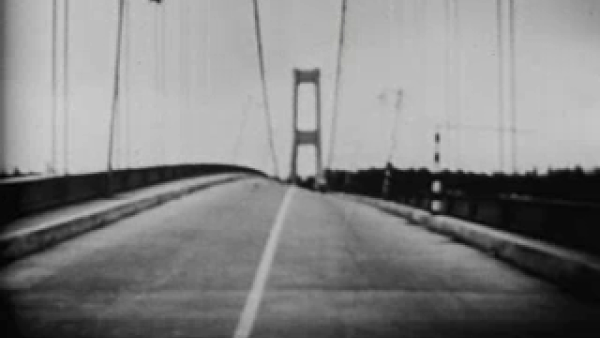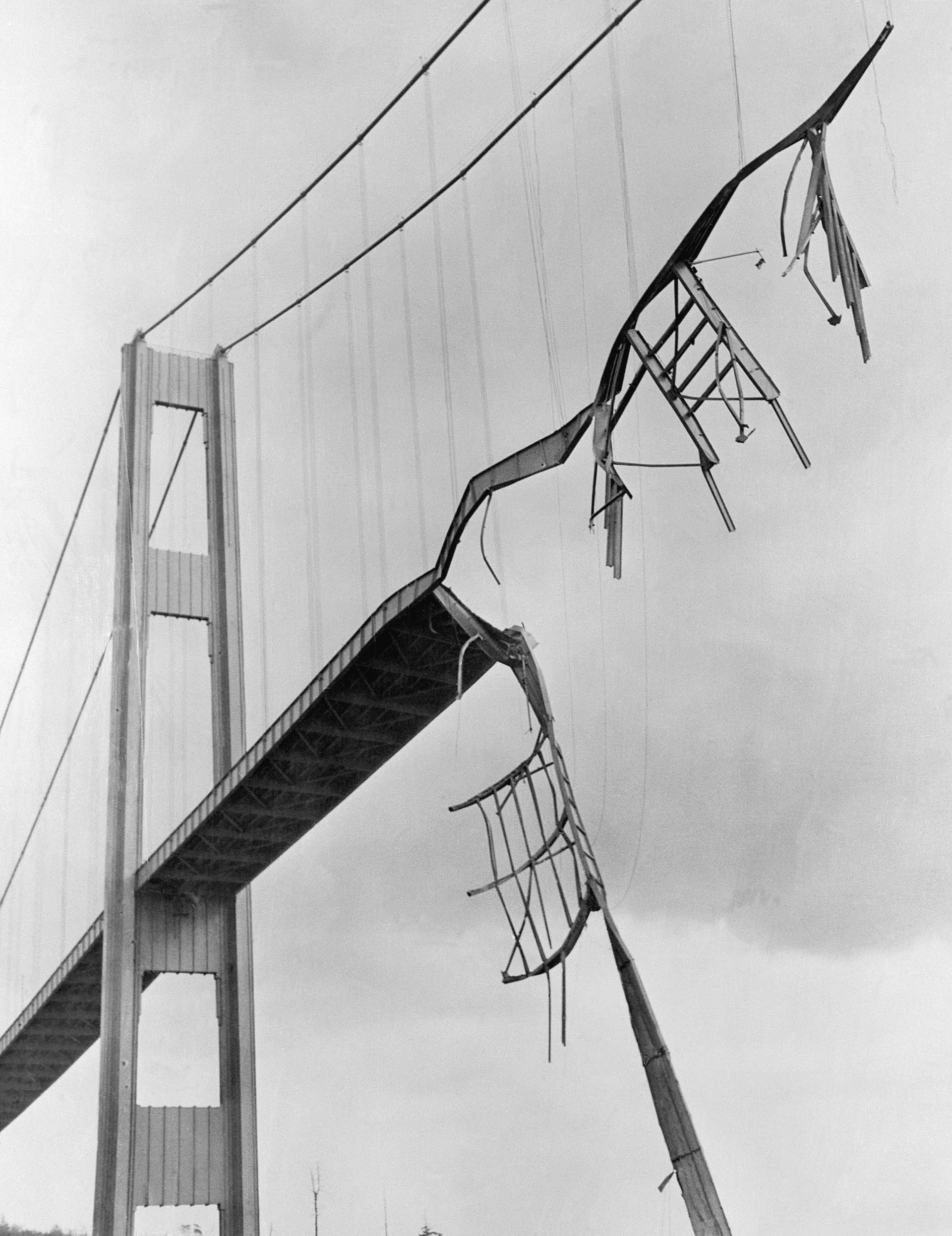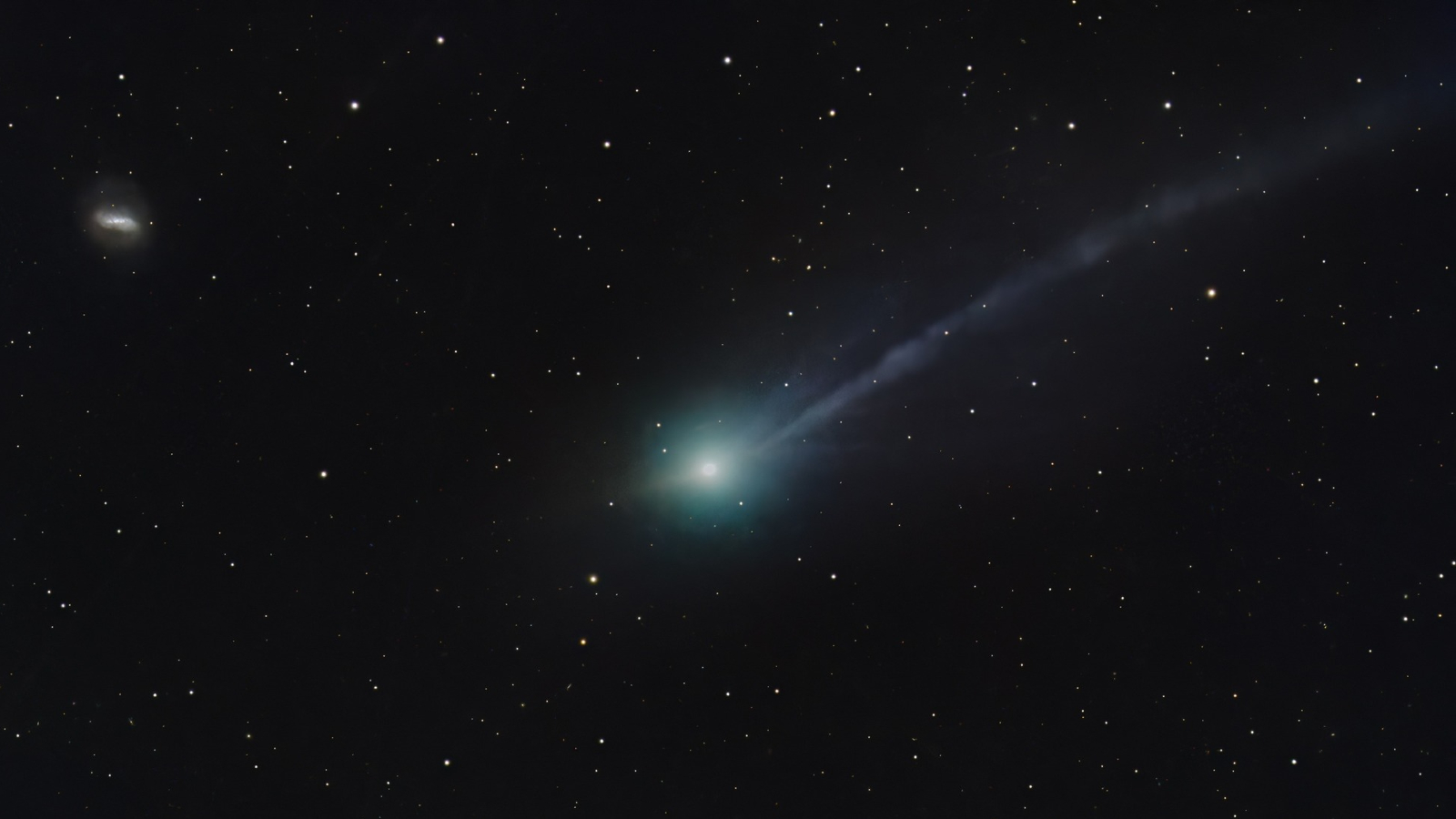
Milestone: Tacoma Narrows Bridge collapses
Date: 11:02 a.m. local time on Nov. 7, 1940
Where: Tacoma Narrows strait, Puget Sound, Washington
Who: Leonard Coatsworth and others who witnessed the collapse
The winds were blowing at 40 mph (64 km/h) across the Tacoma Narrows strait when "Galloping Gertie" began to bounce.
The Tacoma Narrows Bridge, which connected Tacoma, Washington, with the Kitsap Peninsula, had opened to great fanfare just a few months earlier, in July 1940. The elegant and flexible structure — at the time, the third-longest suspension bridge in the world — had been designed by world-renowned bridge engineer Leon Moisseiff, who also helped design the Golden Gate Bridge.
Yet, from the beginning, workers noticed the bridge's oscillation in the wind, nicknaming it "Galloping Gertie."
"We knew from the night of the day the bridge opened that something was wrong. On that night, the bridge began to gallop," said F. Bert Farquharson, an engineer at the University of Washington who had been hired by the Toll Authority to figure out the source of the oscillation, according to the Washington Department of Transportation (WSDOT).

When Farquharson's team contacted Moisseiff, he acknowledged that two of his other bridges also oscillated, but with much lower amplitude.
Farquharson's team commissioned a 1:200 scale model that was 54 feet (16.5 meters) long, as well as an 8-foot-long (2.4 m) 1:20 scale version of one of the bridge sections to try to pinpoint the problem. They also used a wind tunnel in an attempt to replicate the issue.
Meanwhile, the Toll Authority immediately began trying to remedy the problem. Soon after the bridge's opening, engineers installed four hydraulic jacks to act as shock absorbers, but Gertie kept galloping. In October, the team affixed temporary cables to tie the bridge to the ground across the bridge's span. Although the tie-down cables reduced oscillations at the bridge's ends, the center still moved up and down. In any case, one cable snapped during high winds on Nov. 1, and the bridge began galloping again.
Get the world’s most fascinating discoveries delivered straight to your inbox.
On Nov. 2, Farquharson's team finished their modeling, which revealed that the bridge began twisting when winds gusted up from the sides. The team suggested either cutting holes in the girders or blocking the wind with deflectors. They began making fixes. In 10 days, some of those deflectors would have given the bridge enough stability to be safe, they argued, and the full bridge retrofit would have been completed in 45 days.
But they never got a chance to see if those fixes would work. On the morning of Nov. 7, Leonard Coatsworth, a copy editor at the Tacoma News Tribune, was driving to the family's summer cottage on the peninsula with Tubby, his daughter's three-legged cocker spaniel, when the bridge began to undulate up and down and tilt side to side. He called his newspaper, which sent along reporter Bert Brintnall and staffer Howard Clifford as a photographer.
Prior to this, Coatsworth said, he'd experienced the bridge moving up and down, but the tilting was new.
"Before I realized it, the tilt from side to side became so violent I lost control of the car and thought for a moment it would leap the high curb and plunge across the sidewalk of the bridge and into the railing," Coatsworth wrote in an account the same day for the Tacoma News Tribune.
He abandoned the car part way across the bridge.
Clifford, for his part, was the last man off the bridge.
"The roadway was bouncing up and down, falling beneath me and literally leaving me running in air. It would then bounce back, forcing me to my knees. I continued for what seemed like ages, but probably was only a couple of minutes and finally reached stable ground. Bert [Brintnall] was waiting there for me, leaving me to be the last person off the bridge," Clifford said in a later story for the newspaper.
There was a loud noise, like a shot, when the 57 foot (17.5 m) cable snapped, and at 11:02 a.m., the center of the bridge fell into the water. Clifford and Brintnall and a cameraman captured the bridge's fall.
Tubby the dog did not make it, but he was the only casualty of the day.
The catastrophic collapse seriously tarnished the reputation of Moisseiff, who died of a heart attack just three years later.
But the bridge collapse also provided unprecedented engineering insights.
A team eventually determined that the collapse was caused by torsional flutter. After a cable midspan slipped, it separated into two unequal lengths. This, in turn, allowed the bridge to start twisting. Twisting changed the angle of the wind relative to the bridge's main plate girders so that it absorbed more energy, thus raising the amplitude of the motion. At some point, the twisting synchronized with the wind vortex, and the twisting became self-sustaining.
"In other words, the forces acting on the bridge were no longer caused by wind. The bridge deck's own motion produced the forces. Engineers call this "self-excited" motion," according to the WSDOT.
In all, the bridge was too long, its deck was too light, and its roadway was too skinny to provide sufficient resistance to aerodynamic forces, a report on the failure concluded.
As a result of the collapse, all engineers must test a 3D-scale version of any bridge in a wind tunnel before building begins. The failure also meant that "deflection theory" — a notion that only vertical motion in suspension bridges was relevant — was amended to include other modes of motion. And after a great windstorm threatened the Golden Gate Bridge in 1951, the iconic Bay Area landmark was strengthened to improve its "torsional stability."

Tia is the editor-in-chief (premium) and was formerly managing editor and senior writer for Live Science. Her work has appeared in Scientific American, Wired.com, Science News and other outlets. She holds a master's degree in bioengineering from the University of Washington, a graduate certificate in science writing from UC Santa Cruz and a bachelor's degree in mechanical engineering from the University of Texas at Austin. Tia was part of a team at the Milwaukee Journal Sentinel that published the Empty Cradles series on preterm births, which won multiple awards, including the 2012 Casey Medal for Meritorious Journalism.
You must confirm your public display name before commenting
Please logout and then login again, you will then be prompted to enter your display name.


